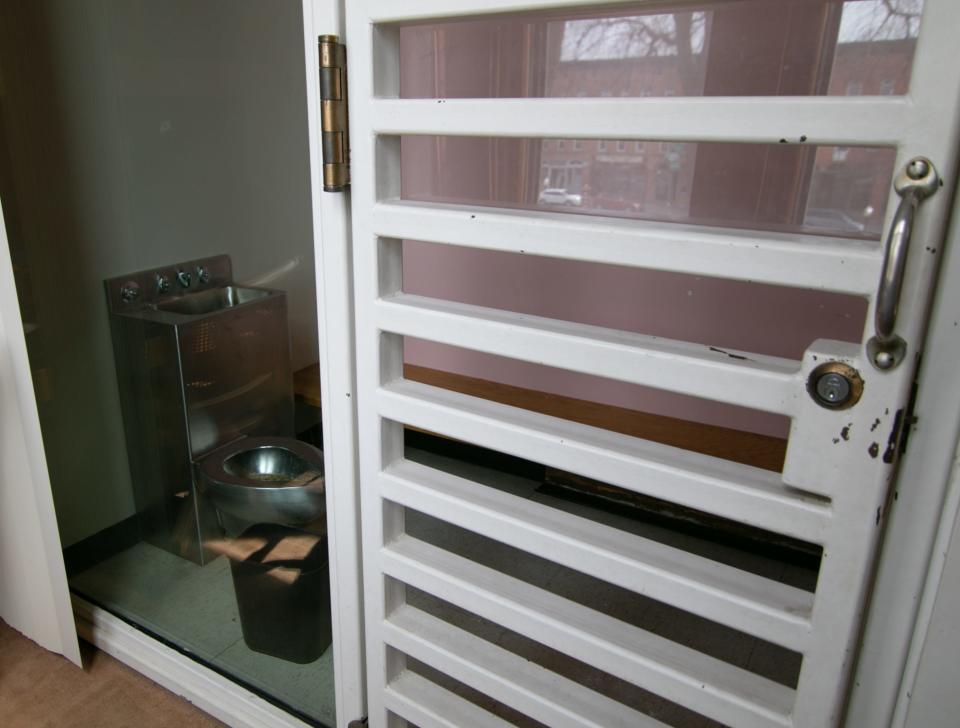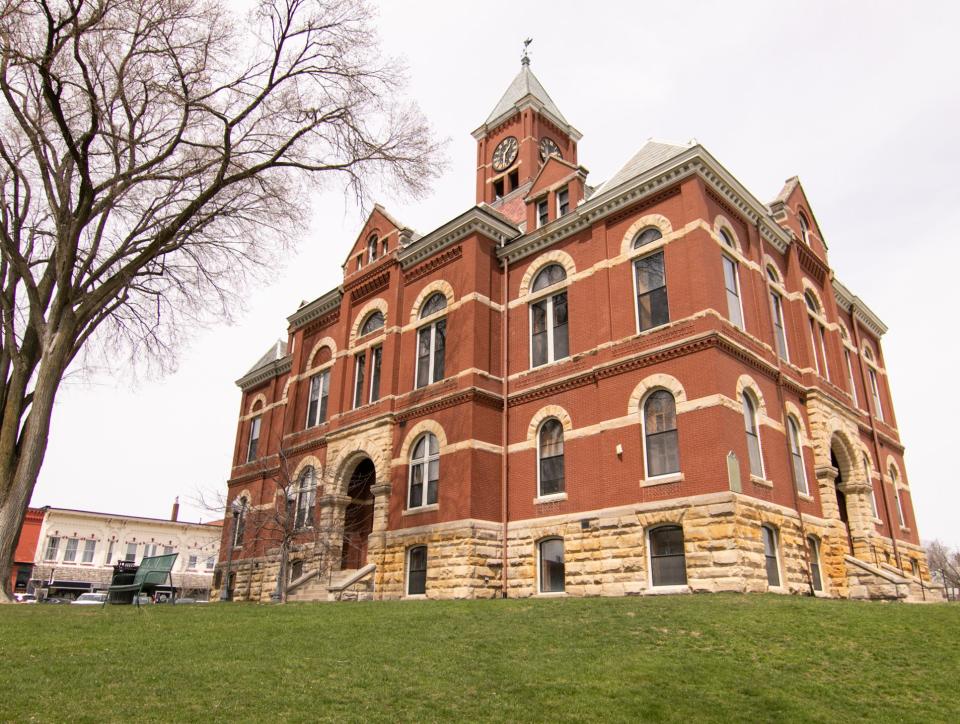Built for strength and durability, historic Livingston County Courthouse lives on
HOWELL — The Livingston County historic courthouse is designated a registered Michigan Historic Site — and also serves as an icon for the city after more than 100 years in the center of town.
The 1890 courthouse continues to serve the public, thanks to renovations completed in 1978, although not in its prime capacity, since the courts moved to a new building. Three county offices continue to operate inside the classic building: the Livingston County clerk, treasurer and register of deeds.

A jail cell next to the courtroom hasn't housed anyone since the 1980s; the last criminal trial held in the courtroom was that of Ronald Lloyd Bailey, who was found guilty of kidnapping and murder of Shawn Moore in 1986.
The courtroom is maintained, frozen in time, with hand-stenciled and free-hand painted designs on the walls and ceiling that were retouched by restoration designer Darla Olson and former County Commissioner Lynn Jamieson as part of renovation work done in the late 1970s.

The gallery includes individual folding seats built of wood and cast iron. Seats for the jurors, attorneys, judge and clerk are ornately carved wood with cane seats.
MORE: Timeline of Shawn Moore killer's crimes.

Undertaking renovations of the historic Livingston County Courthouse was a challenge. A proposal on the May 1976 primary ballot asked for $1.4 million for renovation of the building, in addition to another $1.4 million to build the current law building, which handles circuit and district court cases in the county.
According to Amy Kostesich, administrative coordinator for the Livingston County clerk, a requirement says that at least one function per year must take place in the courtroom.
Kostesich said the original county courthouse was built in 1847 and was condemned 42 years later. The county rented the Howell Opera House for $15 a day until the new Livingston County Courthouse was up and running.
This article originally appeared on Livingston Daily: The historic Livingston County Courthouse holds many stories

 Yahoo Autos
Yahoo Autos 